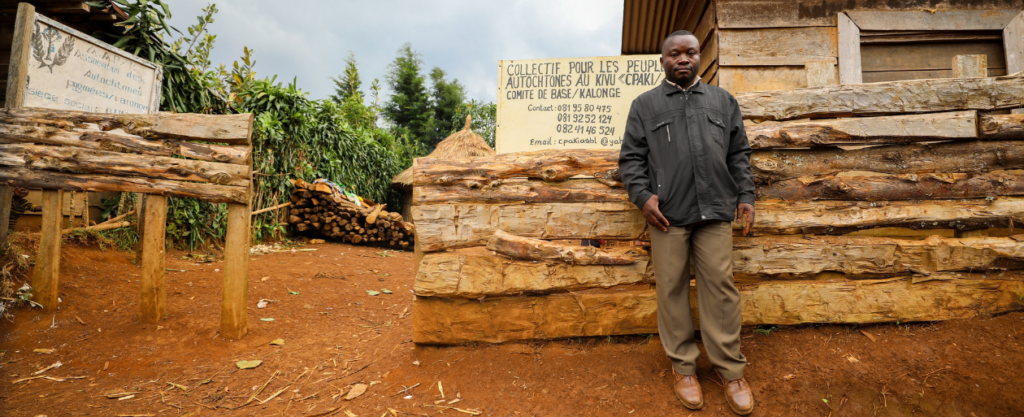
Protecting Indigenous rights to land, water, and resources is a long-term investment in Planet Earth.
And yet, Indigenous voices are often excluded when it comes to decision-making around their own ancestral lands. In the Kahuzi Biega Forest in the Democratic Republic of the Congo, one community fought to overcome huge hurdles to continue to live in the forest they’ve called home for generations.
In the 1980’s, the Congo government forcibly seized the Kahuzi Biega Forest, evicting the Batwa Pygmy who lived there, and converted the forest into government protected land without consulting the community. Dense, healthy forests were then sold to mining and logging companies.
Since evicting the pygmies from their homes, the forest cover has reduced by an astonishing 40%.
That’s why a group of community members began to educate locals about their rights – and the Kivu Indigenous Peoples Movement (CPAKI) was formed. With funding from Global Greengrants Fund, CPAKI has been working to protect other indigenous communities from forced evacuations, stop destructive logging and mining in their forest, promote political education about land rights, and build self-sufficiency through sustainable agriculture.
In 2006, the government tried to evict communities living in the Itombwe Forest, just south of the Kahuzi Biega Forest. CPAKI pressured the government to include indigenous voices. In the end, Indigenous Peoples were allowed to stay on their land – a huge success.
One of the benefits of protecting indigenous land rights correlates directly with protecting forests, which are critical in safeguarding our planet against harmful greenhouse gases. Strengthening Indigenous people’s rights to self-determination protects against deforestation and would prevent 850 gigatons of carbon emissions globally.
To learn more about the inspiring story of CPAKI, watch the video below.
